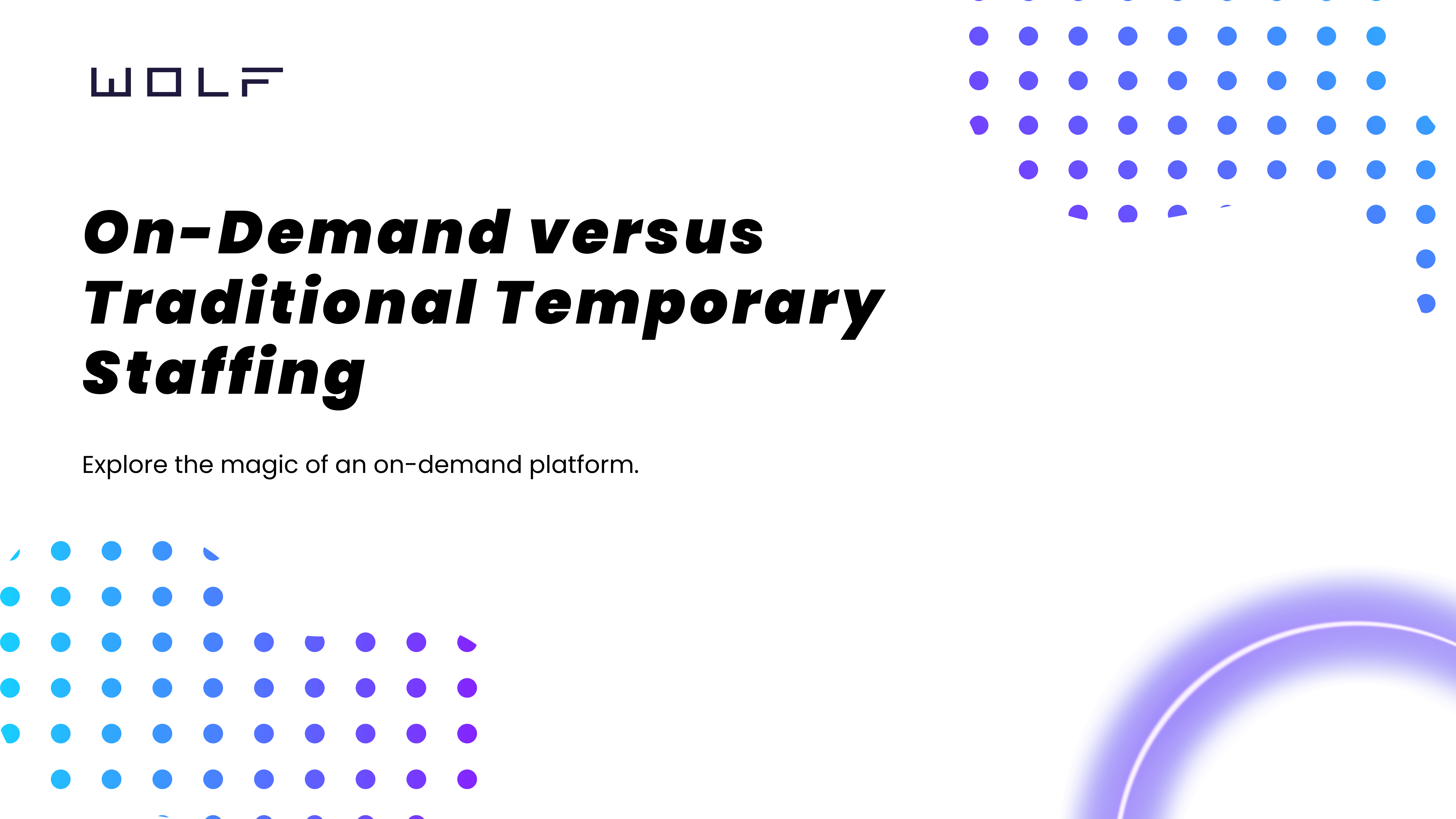
Product
On-Demand versus Traditional Temporary Staffing
19 Sep 2025

Staffing agencies can typically hire for a board range of jobs, but their manual hiring process take time and don’t always allow for targeted specialization.
On the other hand, on-demand models focus on segmentation in jobs, allowing for the best possible match outcome depending on job requirements. For example, instead of hiring a barista, platforms can target in minutes a barista with 3 years of experience in shift leading and knows inventory management.
On-demand platforms have a unique vetting system that promises these results. This allows a broad range of job requests to be staffed “on-demand”, without sacrificing worker quality or overseeing requirements the client can get highly specific about.
On-Demand Platforms versus Traditional Temporary Staffing:
Converting Legwork into Automated Processes
Your clients don’t need to reach out to you directly to request staff. Instead of calling or emailing your team when they’re looking to hire, clients can place an order for staff directly on the platform at any time with all the details included such as location, job details, pay rate, and contact information. This means your clients can place more job orders at a much faster rate than before or have workers staffed for a last-minute shift, which is especially helpful during demand spikes.
Recruiters or administrative staff no longer need to identify candidates, conduct interviews, and send them over to your clients because the platform automatically matches your pre-vetted workforce, notifies, and assigns them to each job using AI technology. This increases your fill rates and allows for larger workforce pools, since the platform can onboard, vet, and outreach to a high volume of candidates, quickly.
Similarly, the payment and billing your team is typically tasked out to complete are done by the platform automatically. Client users add a payment method to pay their invoices and candidate users connect their bank account to get paid after their shifts.
Although, the beauty of the platform itself is that it’s customizable, so any of these processes you’d rather have your team lead wholly or simply intervene in to a degree, can be done as well.
Benefits of these Automated Processes Compared to Traditional Temporary Staffing Workflows:
Save Time
Your team can save countless hours by not needing to spend time communicating back and fourth with clients each time they want to hire, sourcing and contacting candidates for each order, or manually handling invoicing and payments.
Save Money
Because the platform can manage these tasks, you don’t need to spend as much money on resources as you typically would to support these processes, lowering operational costs. For example, you may no longer need to hire additional members to handle accounting or won’t need as many recruiters. Previously, you may have had a team of recruiters reviewing resumes and doing interviews, as well as a separate team dedicated to managing payroll and invoicing clients. Now, you may just need a select few to oversee what’s happening on the platform and intervene at times to verify candidate credentials or edit a line item on an invoice.
Scale
Saving time and money means you have a larger opportunity window to scale your business. Maybe this means shifting your short-term focus to marketing to attract more candidates. In parallel, you could be working on business development initiatives to partner with more clients and build better relationships with them, ensuring their needs are being met.
Have the Infrastructure to Support your Scale
Rest assured, there is no need to anticipate that moment of panic when you realize you don’t have the resources to manage your growth. On-demand platforms, by definition, are built to scale. You can grow, in theory, to an unlimited workforce, client, and job order count, and the platform is the tool that keeps all components working together, simultaneously.
Conclusion
On-demand staffing models are undoubtedly a promising solution for companies looking to scale and gain a competitive edge in the industry. They’re becoming a market force that is proving worth investing some research in, if not fully implementing in your temporary staffing company.
If you’re interested in learning more about Wolf’s on-demand staffing platform, click here to book a demo today.

Launch Your Own Branded Staffing Platform—Fast
Book a demo to see how Wolf automates matching, scheduling, and payments under your brand.



.png)

